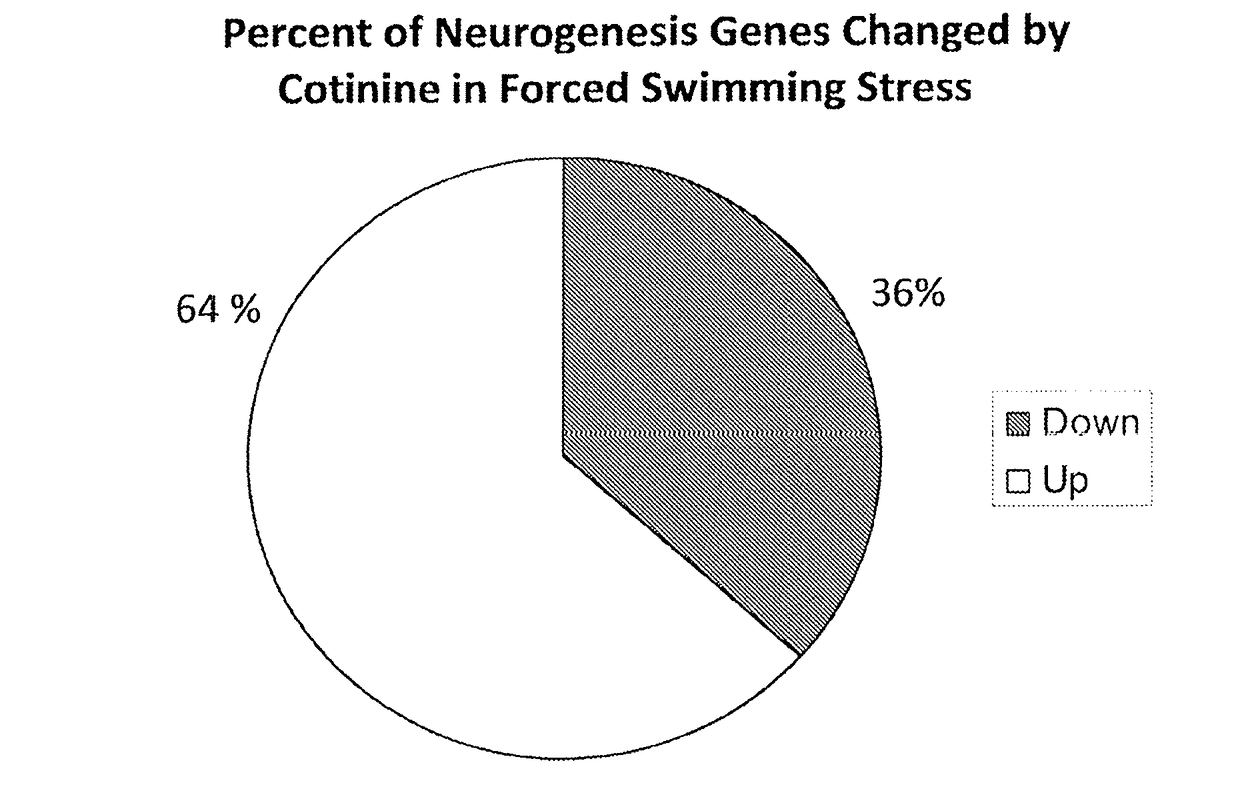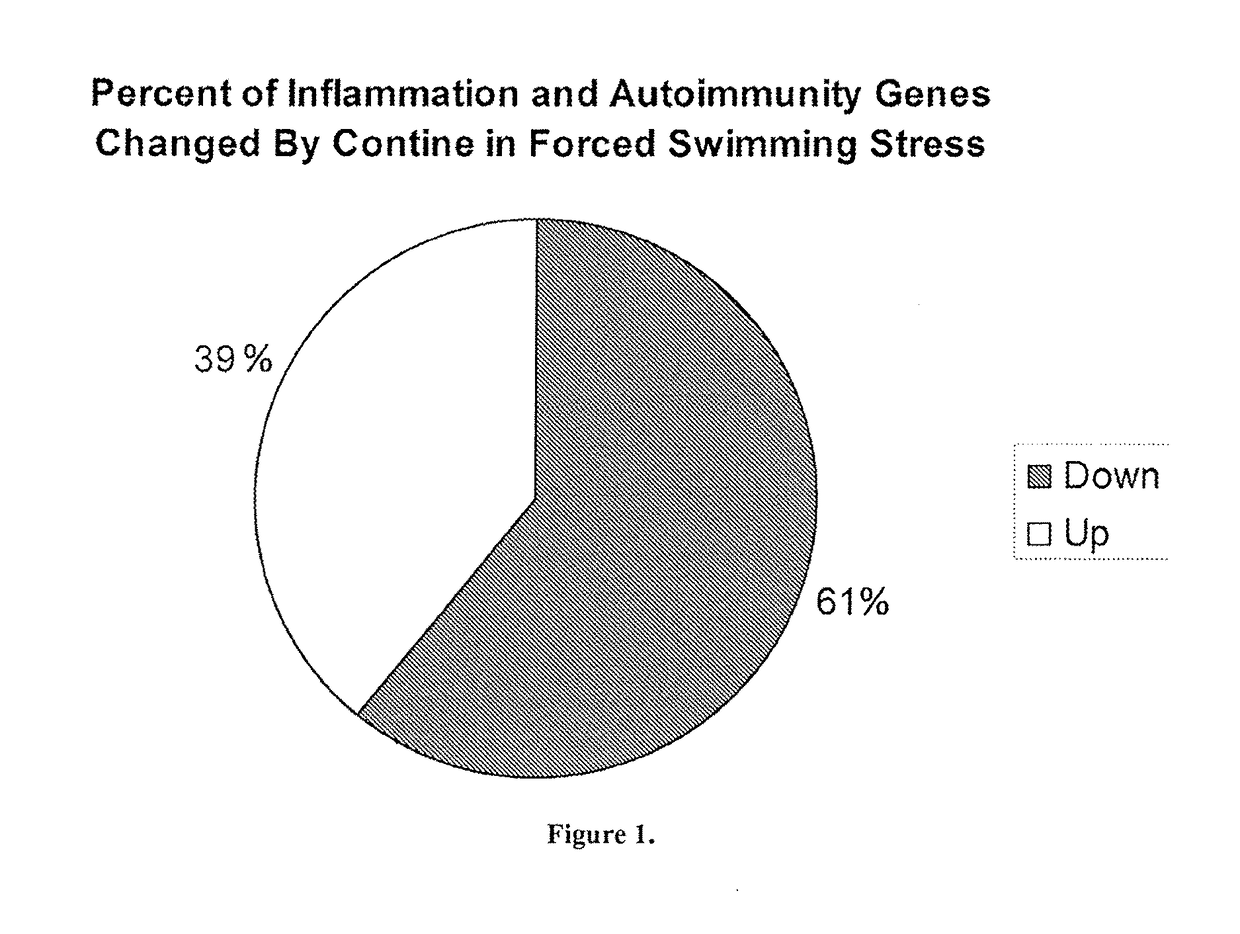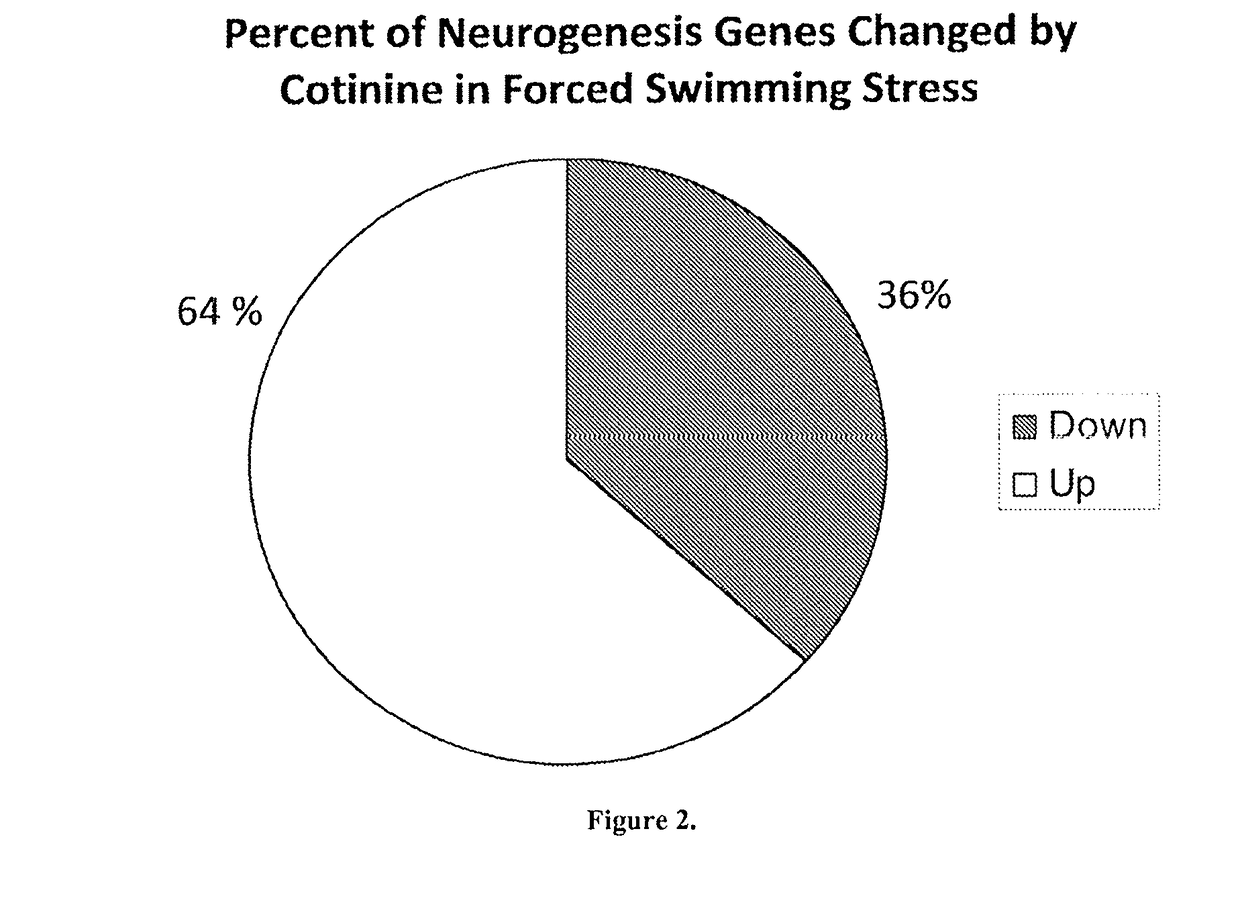Use of cotinine in treating or preventing neurogenesis deficits and enhancing neurogenesis
a neurogenesis deficit and cotinine technology, applied in the field of chemotherapy or stress-related side effects, can solve the problems of indirect oxidative damage, chemical neurotoxicity, negative side effects, etc., and achieve the effects of reducing neurogenesis, reducing stress-related negative effects, and reducing expression
- Summary
- Abstract
- Description
- Claims
- Application Information
AI Technical Summary
Benefits of technology
Problems solved by technology
Method used
Image
Examples
example 1
[0129]Two-month-old male C57BU6J mice (The Jackson Laboratory, Bar Harbor, Me.), weighing 25-30 g were maintained on a 12-hours light / dark cycle (light on at 07:00) with ad libitum access to food and water and maintained at a regulated temperature of 25±1 ″C. Upon arrival mice were group-housed and acclimated for 7 days before any intervention.
[0130]Mice were randomly divided into three groups as follows: group 1 controls that were not exposed to stress (NES) and treated with vehicle (phosphate buffered saline, PBS); group 2 controls subjected to forced swimming stress (FSB) and treated with vehicle; group 3 subjected to forced swimming stress and treated with cotinine (FSA).
[0131]Cotinine ((5S)-1-methyl-5-(3-pyridyl) pyrrolidin-2-one; Sigma-Aldrich Corporation, St. Louis, Mo., USA) solutions were prepared by dissolving the powdered compound in sterile phosphate buffered saline (PBS), and vehicle (PBS). Mice were treated with vehicle or cotinine (5 mg / kg) via gavage. The gavage tech...
example 2
[0139]To study whether the effect of cotinine was linked to an anti-inflammatory effect, the expression of inflammation genes in the hippocampus of stressed mice was compared in treated (cotinine) versus nontreated (vehicle), using the inflammation and autoimmunity gene expression arrays. Inflammatory response and Autoimmunity PCR arrays (PAMM-077Z) (SABiosciences; Qiagen N.V., Venlon NL) were loaded and placed into a DNA Engine Opticon RT-PCR instrument (Bio-Rad Laboratories, Inc., Hercules, Calif.). A mix of 1,350 μl 2×RT2 SYBR Green Mastermix, 102 μI cDNA synthesis reaction, and 1,248 μl of RNase-free water was prepared for each sample. Using a multichannel pipette, samples obtained as per Example 1 were loaded into each well of the 96-well plates. Thermal cycling was performed as follows: 1 cycle of 95° C. for 10 minutes, followed by 40 cycles of 15 seconds at 95° C., 1 minute at 60° C., and data collection. A melt curve was performed to assay the reaction specificity as follows...
example 3
[0143]To study whether administration of cotinine was linked to an enhancement of neurogenesis in the hippocampus, the expression of neurogenesis genes in the brains of vehicle-treated and cotinine-treated mice were compared. Neurogenesis and a neural stem cell real-time polymerase chain reaction (RT-PCR) arrays were used to determine the effect of cotinine on the expression of neurogenesis genes in the hippocampus of mice. The RT-PCR reaction basically consists in quantifying a fluorescent dye that intercalates with the complementary DNA (cDNA) amplified in each cycle. In this array, the RT-PCR reactions allow the simultaneous detection and quantification of the expression of 84 genes coding for stem cell specific biomarkers known to have positive or negative effects on the regulation of cell proliferation, cell differentiation, synaptic function, apoptosis, cell adhesion, and cell signaling of neurogenesis.
[0144]PCR array data was then analyzed. Raw data Ct values were determined ...
PUM
| Property | Measurement | Unit |
|---|---|---|
| time | aaaaa | aaaaa |
| depth | aaaaa | aaaaa |
| diameter | aaaaa | aaaaa |
Abstract
Description
Claims
Application Information
 Login to View More
Login to View More - R&D
- Intellectual Property
- Life Sciences
- Materials
- Tech Scout
- Unparalleled Data Quality
- Higher Quality Content
- 60% Fewer Hallucinations
Browse by: Latest US Patents, China's latest patents, Technical Efficacy Thesaurus, Application Domain, Technology Topic, Popular Technical Reports.
© 2025 PatSnap. All rights reserved.Legal|Privacy policy|Modern Slavery Act Transparency Statement|Sitemap|About US| Contact US: help@patsnap.com



